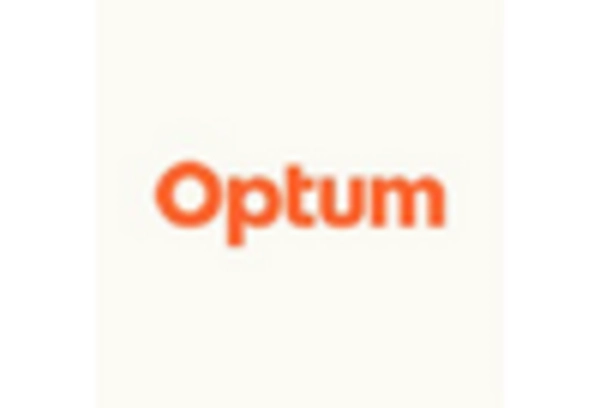Increased Focus on Patient-Centered Care
The Long-Term Care Software Market is witnessing a shift towards patient-centered care, which emphasizes the individual needs and preferences of residents. This approach not only improves the quality of care but also enhances patient satisfaction and engagement. Software solutions that support personalized care plans, facilitate communication between patients and caregivers, and track patient outcomes are becoming essential. Facilities that prioritize patient-centered care are likely to see improved ratings and better financial performance. As the industry moves towards this model, the demand for software that can effectively support these initiatives is expected to grow, indicating a positive trajectory for the Long-Term Care Software Market.
Technological Advancements in Healthcare
Technological advancements are significantly influencing the Long-Term Care Software Market. Innovations such as artificial intelligence, machine learning, and cloud computing are transforming how long-term care facilities operate. These technologies enable more efficient data management, improved patient monitoring, and enhanced communication among care teams. For example, AI-driven analytics can provide insights into patient health trends, allowing for proactive interventions. The integration of telehealth solutions further supports remote patient management, which is becoming increasingly vital in long-term care settings. As facilities adopt these advanced technologies, the demand for sophisticated software solutions that can leverage these innovations is expected to rise, thereby driving growth in the Long-Term Care Software Market.
Rising Demand for Long-Term Care Services
The Long-Term Care Software Market is experiencing a notable surge in demand for long-term care services. This trend is primarily driven by an aging population that requires more comprehensive care solutions. According to recent statistics, the number of individuals aged 65 and older is projected to double by 2050, leading to an increased need for long-term care facilities and services. Consequently, software solutions that streamline operations, enhance patient care, and improve regulatory compliance are becoming essential. The growing emphasis on quality of care and patient satisfaction further propels the demand for advanced software solutions in the long-term care sector. As facilities seek to optimize their operations and meet the evolving needs of their residents, the Long-Term Care Software Market is poised for significant growth.
Regulatory Compliance and Quality Standards
In the Long-Term Care Software Market, adherence to regulatory compliance and quality standards is becoming increasingly critical. Governments and regulatory bodies are implementing stringent guidelines to ensure the safety and well-being of residents in long-term care facilities. Software solutions that facilitate compliance with these regulations are in high demand, as they help organizations avoid penalties and enhance their operational efficiency. For instance, the Centers for Medicare & Medicaid Services (CMS) has established quality measures that long-term care facilities must meet, driving the need for software that can track and report compliance metrics effectively. This focus on regulatory adherence not only protects residents but also enhances the reputation of care facilities, thereby contributing to the growth of the Long-Term Care Software Market.
Growing Investment in Long-Term Care Infrastructure
Investment in long-term care infrastructure is a significant driver of the Long-Term Care Software Market. As governments and private entities recognize the importance of long-term care, funding for new facilities and the renovation of existing ones is increasing. This investment often includes the implementation of advanced software solutions to enhance operational efficiency and improve care delivery. For instance, the establishment of new long-term care facilities often comes with the requirement for integrated software systems that can manage everything from patient records to billing. As these investments continue to rise, the Long-Term Care Software Market is likely to benefit from the increased demand for innovative software solutions that support the evolving needs of the sector.


















Leave a Comment